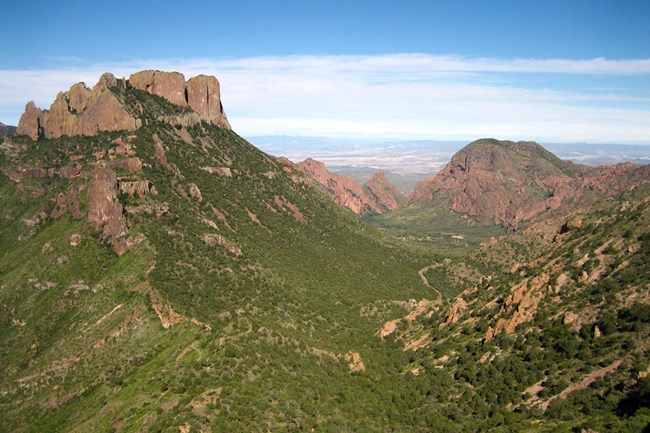
NPS Photo / Reine Wonite
Overview
Big Bend National Park is located in south Texas and is named after the Rio Grande River as it flows, or bends northeast on its path to the Gulf Mexico. The park is located in the Chihuahuan Desert ecoregion and has a rugged topography consisting of the Chisos, Deadhorse, and Mariscal Mountains, many foothills, badlands, mesas, river canyons, and desert plains dissected by a network of washes, arroyos and drainages. Big Bend National Park's diverse landscape play a major role in the formation of its plant communities, including relic communities hanging on in higher elevations and more recently adapted species able to survive in hot and dry conditions..The Big Bend National Park Vegetation Inventory Project delivers many geospatial and vegetation data products, including an in-depth project report discussing methods and results, which include descriptions to vegetation associations, field keys to vegetation associations, map classification, and map-class descriptions. The suite of products also includes a database of vegetation plots, and accuracy assessment (AA) sites; digital images of field sites; digital aerial imagery; digital maps; a contingency table listing AA results; and a geodatabase of vegetation, field sites (vegetation plots, and AA sites), aerial imagery, project boundary, and metadata.
Products
The products of vegetation mapping projects are stored and managed in the National Park Service's Data Store, a repository for documents and publications relating to park resources. From the highlighted items below, click on the type of information you are looking for.
Last updated: January 23, 2020
